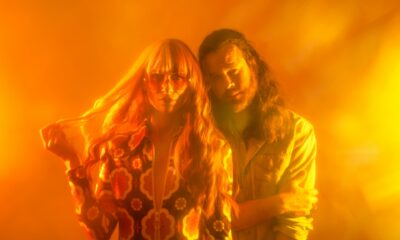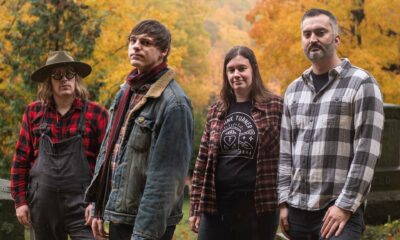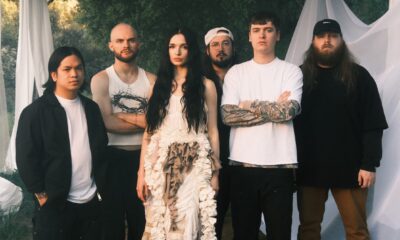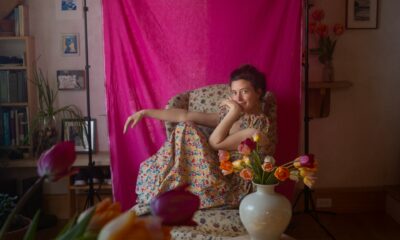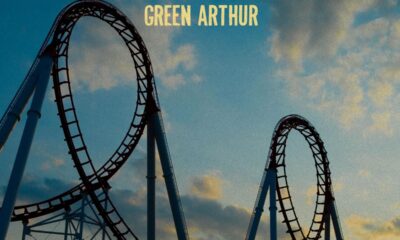Alternative/Rock
Behind the Video: Cellista Offers a Look Inside Her “Pretend” Music Video
Read our interview with Cellista wherein we discuss her “Pretend” music video, its concept, her collaborative vision for her work, and more.
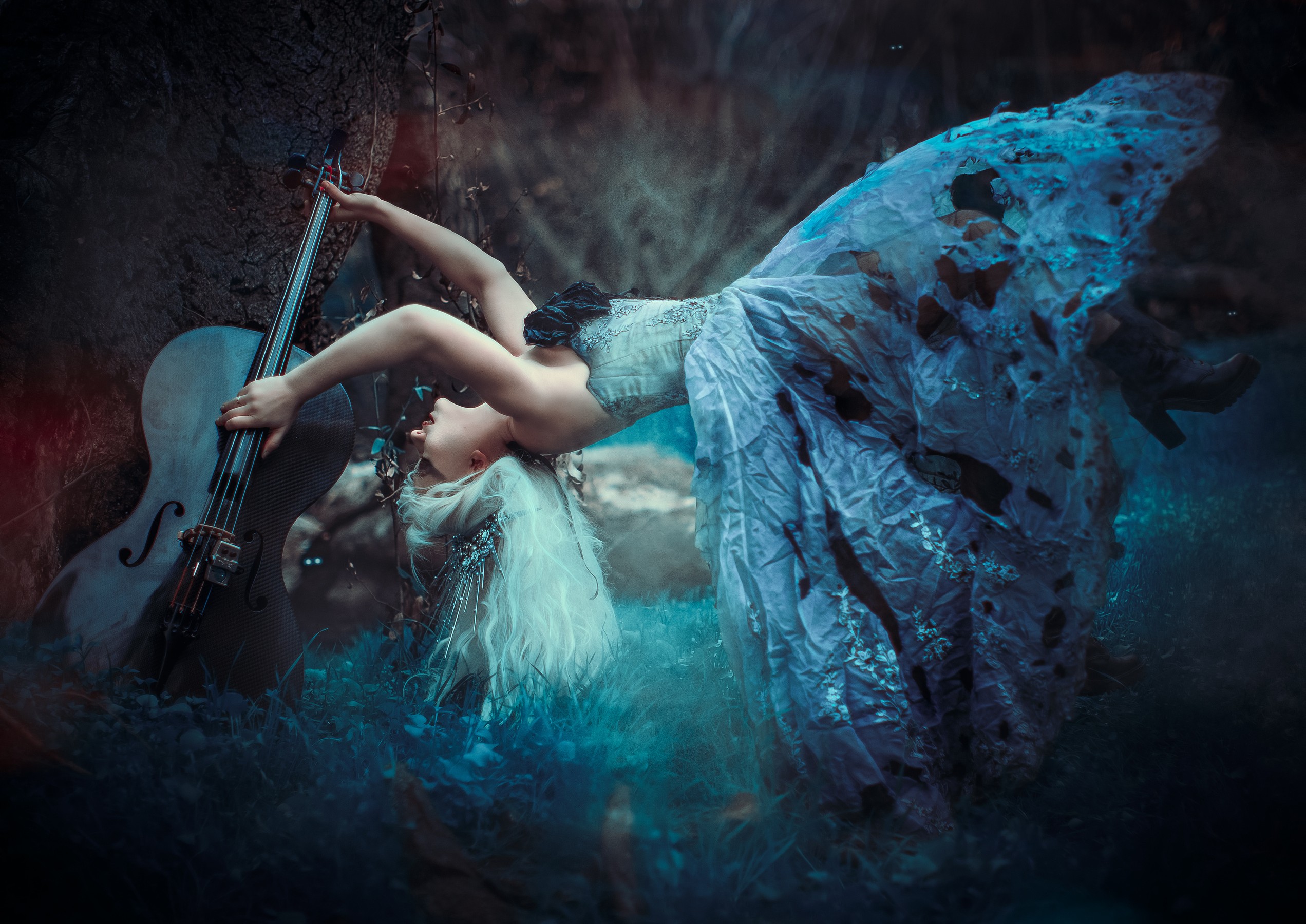
With the final Thursday in February arriving, it means that it’s time for the final music video from Cellista in her special video series. All of this month, we have teamed up with the singer, songwriter, poet, and composer to unveil four very special music videos, or visual accompaniments to four tracks on her latest album Pariah, issued back in October via Juxtapositions. Not just a compilation of songs, the songs on Pariah are all meant to form an interconnected story, meant to capture all the highs and lows, ups and downs, and ebbs and flows that Pariah encounters in her tale of liberation and discovery.
Today we unveil the music video for “Pretend,” featuring Cellista’s hard-hitting poetic, spoken-word lyrics, with a beautiful symphonic backdrop. Describing the song and what it represents, Cellista tells us:
“‘Pretend’ represents Pariah’s total transfiguration into Wanderer. It is the most moving and enlightening part of Pariah’s character development with Poser. It leaves a door open for Poser’s development.”
Pariah is a dreamlike fairytale that’s meant to break down barriers between the audience and performers. The album tells the story of Pariah, a woman who is cast off from her community for daring to speak truth to power. Following her exile from her home in Cloture, the story follows her encounters with apparitions, love, and her eventually reaching a level of acceptance of herself. This is resistance art in the purest and most revealing form, intended to defy convention and break down barriers.
“For our fourth and final edition of our Pariah video series, we spoke with Cellista for a more lengthy conversation about the “Pretend” music video, its concept, her collaborative vision for her work, and the high value she places on the artists who helped make this video a reality.
Any concepts where you started and, midway through, thought “what the fuck are we doing?”
Cellista: “Nah. I’m pretty committed to being as weird as I can fucking be. No regrets.
I have had more of a ‘Why the fuck not?’ kind of moment involving cake, a rainmaker, sock puppets, drunk ballerinas, puppies, and levitation. You had to be there. I may classically-trained but there’s always room for sock puppets and cake in my art.
“Could we talk about the concepts I have yet to implement?
“Like the one where I convince everyone to come to an aerial + cello show that I’ve branded as incredibly sophisticated and avant garde, but when the audience arrives and the curtain is pulled, it’s just me on static trapeze in nothing but a top hat doing comedy that revolves around the sex lives of dead composers… (by the way, they all died of STDs. Classical music doesn’t mean classy musicians).”
If money was no issue what would be in your perfect video?
“What a dream. Honestly, what I dream of is simply having more time. The time to allow my performers to explore the concepts we’re trying to share and the time to have more improvisation. The time to have rehearsals and workshop ideas. The time to edit with curiosity rather than pressure. I would also like to be able to compensate my dancers and creative team better.
“So many of them are working artists living in extraordinarily difficult cities like San Francisco. A place where the cost of living is abominable and the local government cares little about those who create culture and give their cities an identity. Sometimes I am amazed that any art comes out of the Bay area or other expensive metropolitan areas. It is a struggle to be a working artist in this climate. The odds are against you in a multitude of ways. To better compensate my team so they don’t have to work other jobs or hustle so hard just to exist would be a dream.
“I feel very emotional and protective about the artists around me who I am lucky enough to call friends. I feel protective of their work. They went above and over for Pariah and gave me their greatest gift; that of time. To my collaborators, who helped me implement my vision: thank you.”
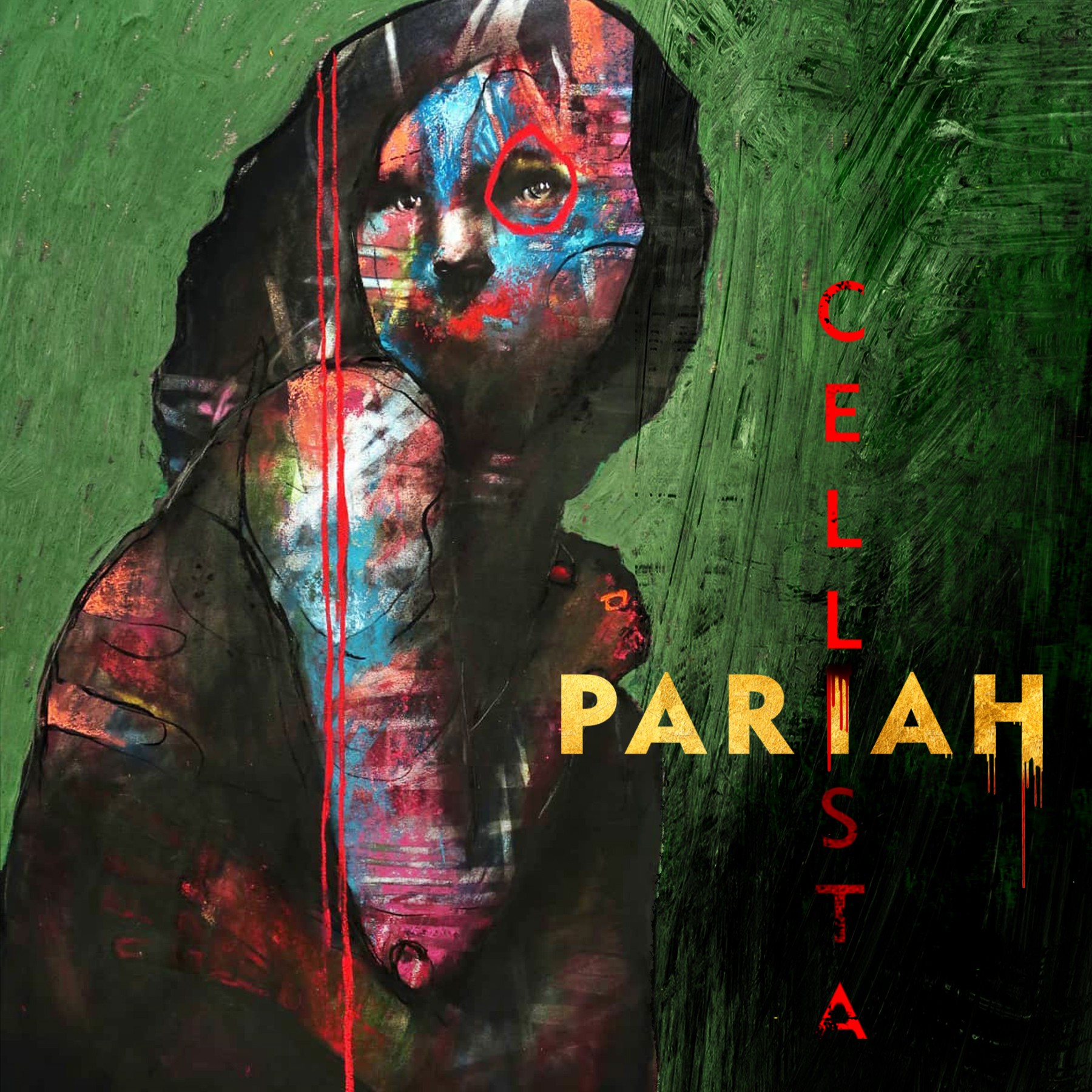
Artwork for the album ‘Pariah’ by Cellista
If you could have any guest appear in your video who would you have?
“My biggest inspiration: The French performance artist Olivier Sagazan, who has been an endless source of inspiration in terms of process for the past 15 years. My last album Transfigurations was named after an exhibit by him. It was a bit of an homage. His work explores the grotesque and vulgar within the realm macabre theater. It is shocking, upsetting, and beautiful in its truthfulness. It is haunting.
“Or, Snoop Dogg. I feel there’s no explanation needed here.
“Or, Jeff Goldblum, but ideally both Snoop and Jeff together at last.”
Do you prefer writing a video around the theme of a song or just going on a warehouse and banging out a live performance?
“Pariah is rooted in a pretty strong classical tradition despite her prevalent hip hop and beat-boxing tones. To encounter her visually, in a film, requires some structure and not much live performance. Also, the idea of having to coordinate two sopranos, guitarist, classical pianist, beatboxer, timpanist, rapper, and narrator for a film shoot seems like a surefire way for me to lose my mind.
“I also have a rule: I will not appear in any music videos for my albums. Mainly because I prefer directing and telling people what to do. That could change if either Snoop or Jeff enter my world.”
How does the music inform the video in terms of visuals matching sound?
“The two, music and visuals, inform each other. I consider my work integrative; resting on pillars. Each one is important to the whole, but extracted they are able to stand on their own. These pillars are: visual art, film, music, and theater. Collectively, I call these works stage poems.
“I usually begin with writing a story or treatment and then composing to it, all the while visualizing imagery. Very often I am responding to a painting and then begin writing.
“In the case of Pariah, I simply wrote the libretto with my father, the philosopher Dr. Frank Seeburger and spent a considerable amount of time editing and re-writing it until it made sense. I then composed or found works that suited the theme and situated them where they felt most at home and could do the best job of sharing her (Pariah’s) story. Because Pariah is an operetta, each movement or track unfolds narratively, following the story I wrote for it. That makes it easier to create a film.
“In most cases, my films are dance-heavy and feature the mix of classical and modern dancers enacting the libretto.”
Have you ever had such a baller idea for a music video that you’ve written music for it?
“Please see my first answers regarding concepts and guest artists. Of course, I’ve written a minuet and trio and for Snoop and Jeff Goldblum to perform together with cello.”
What is your favourite childhood music video and have you any secret nods to it in your catalogue?
“The subliminal nods to Sir Mix-a-Lot’s ‘Baby Got Back’ are everywhere if you simply look hard enough.
“If you’re wondering why an eight-year-old was watching such a thing, my only explanation is that I was raised by a philosophy professor who is a renowned Heidegger expert and lover of hip hop, and a mother who was a city manager and a competitive archer during college. Things were bound to go weird.”
In terms of the crew you worked with to make this video, who did it include and how did you put together the team?
“My work is highly collaborative but led by my vision. In the case of ‘Pretend,’ I wrote the treatment along with my father. I commissioned the composer and my longtime friend and co-conspirator Joshua Icban to write the final track while integrating it into the storyline. The poet Gary Singh contributed the spoken word poem.
“Within the film, the two dancers: Janesta Edmonds and Lauren Baines performed some improvised choreography while I directed. We shot this piece at the end of the day. Originally, we were never going to do a video for ‘Pretend’ at all. But we were feeling ready to just go for it. I came up with some in-the-moment concepts: asking Janesta and Lauren to mirror each other and have a silent conversation. Lauren was inside of a large smoke box built by Aaron Simunovich, the co-owner of Little Boxes Theater where we spent the day shooting. It was essentially a wooden frame, covered with see-through plastic, into which we pumped smoke from a fog machine.
“With Lauren on the inside and Janesta on the outside, the effect was haunting. They mimed touching, kissing, hugging, and eventually a farewell. All of it improvised with my cues. We did in just a few shots. I think it is the strongest of the videos for its in-the-moment honesty. I care deeply about it and am grateful for the talent of Lauren and Janesta in walking this improvisatory path eagerly with me.
“The cinematographer Bryan Gibel shot this and the film editor and my longest collaborative friend, Jennifer Gigantino, edited every movement of the ‘Pariah’ film with love and care, and a deep understanding of my creative process.”
Follow them, please:
Lauren Baines
Gary Singh
Joshua Icban
Jennifer Gigantino
Little Boxes Theater
Frank Seeburger
-

 Music7 days ago
Music7 days agoTake That (w/ Olly Murs) Kick Off Four-Night Leeds Stint with Hit-Laden Spectacular [Photos]
-

 Alternative/Rock1 day ago
Alternative/Rock1 day agoThe V13 Fix #011 w/ Microwave, Full Of Hell, Cold Years and more
-

 Alternative/Rock1 week ago
Alternative/Rock1 week agoThe V13 Fix #010 w/ High on Fire, NOFX, My Dying Bride and more
-

 Features7 days ago
Features7 days agoTour Diary: Gen & The Degenerates Party Their Way Across America
-

 Culture1 week ago
Culture1 week agoDan Carter & George Miller Chat Foodinati Live, Heavy Metal Charities and Pre-Gig Meals
-

 Music1 week ago
Music1 week agoReclusive Producer Stumbleine Premieres Beat-Driven New Single “Cinderhaze”
-
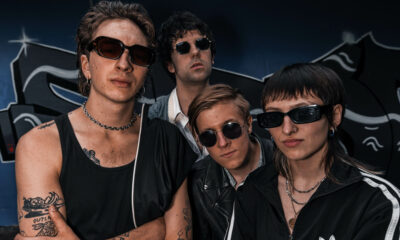
 Indie1 day ago
Indie1 day agoDeadset Premiere Music Video for Addiction-Inspired “Heavy Eyes” Single
-

 Alternative/Rock2 weeks ago
Alternative/Rock2 weeks agoThree Lefts and a Right Premiere Their Guitar-Driven Single “Lovulator”

